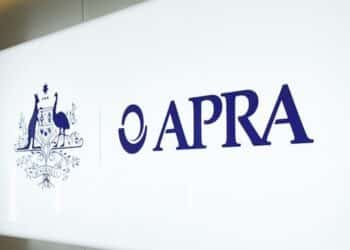In the latest Wealth Data figures, the net loss for the week to 3 July, which includes the end of FY2024–25, stands at 190 advisers, compared to 78 advisers in the same period a year ago.
Some 403 advisers were active during the week with either a resignation or appointment, which Wealth Data said typically to be 80–100. However, it noted many advisers are in a “transition phase” and many may be reappointed over the next few weeks.
This week’s exit brings the total losses for June 2025 to 359, with each week of the month reporting a net loss.
Described as a “bloodbath” by Wealth Data founder Colin Williams, he said the losses this week were far greater than he had expected and were “disappointing” after the industry had reported positive gains earlier in the year.
The portion of the week that fell in FY24–25 looks even worse at 279, which was offset by 89 advisers being added to the register in the first couple of days in FY25–26.
There were 18 new entrants this week, while seven new licensees commenced and 11 ceased.
Williams said he expected the number of new entrants would rise in the coming weeks with many likely to commence at new licensees.
Looking at specific movements for the week, NTAA took the biggest hit with a net loss of 59 advisers and Count Limited lost 19, 10 of which were from Merit Wealth. Both of these firms primarily provided limited SMSF advice, a sector which has been bleeding advisers for several years and fuelled most of the YTD losses.
Some of the industry’s biggest licensees also saw considerable losses, including Entireti, Sequoia, and Rhombus, losing 12, 10, and seven, respectively.
Accession3 and Lifespan were down by five advisers each and a further three licensees, including Industry Super Fund Holdings, were down by net four each.
Five licensees, including Spark Partnership and Beryllium Advisers were both down net three, and another 19, including Evans Dixon and Morgans Group, which lost two each.
There was a very long tail of 69 licensees down by net one adviser each, including Oreana, Shaw and Partners and LFG Financial Services.
While this paints a rather grim picture for the profession this week, there were several licensees up this week as well. In this regard, Guideway came out on top with a net gain of eight.
One of this week’s new licensees commenced with net four and WPFP Group was likewise up by net four.
Another three licensees, including another one of the new starters and ASV Holdings, also picked up three advisers each, while 10 licensees, including Ord Minnet and Janus Financial, were up by net two each.
A tail of 26 licensees were all up by net one adviser each, including Practice Development Group, Boston Reed and the remaining five new licensees.




There are a number of things wrong with the industry which I’m sure we all know about but one of the surprising things for me, moving from Marketing and re-qualifying, is how badly paid it is as an employed adviser. I was working in Marketing on around 200 K but had to move to Adelaide for family reasons and ended up qualifying as an adviser (already had an economics degree).
in Southeast Queensland most roles seem to be advertised for between $110 and (max) $135K which I find just gobsmacking, especially considering all the work that goes into the job, not to mention legal obligations…
Another unfair imposition of the way the ASIC levy is applied – the census date for the levying of the fee is 1st of July. There is a financial benefit to those who can remove anyone off the register prior to EOFY and/or appoint an adviser on or after 1st July.
This number will be nothing compared to the end of December 2025 loses!
Who can blame them, when the only reform to the industry is being able to put your FSG on your website, and a Fee Consent process that is essentially like the old FDS/Opt-in process, except now you have super funds randomly auditing your advice.
Industry Super’s political donations paying off.